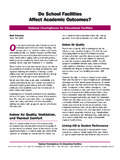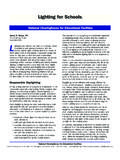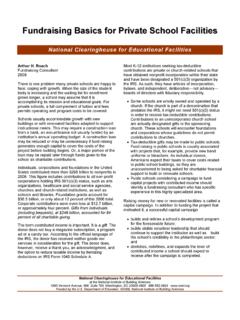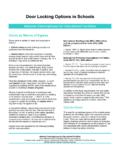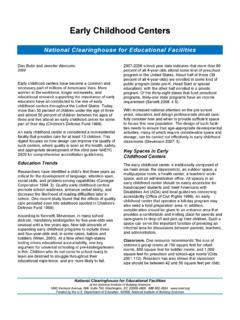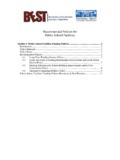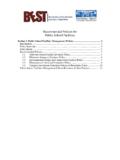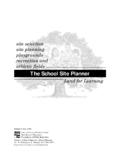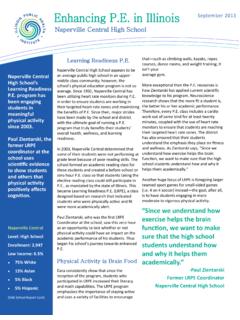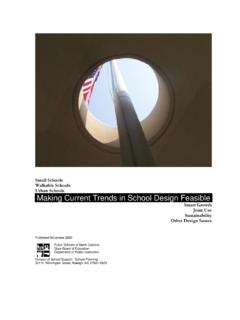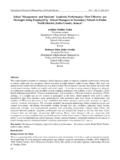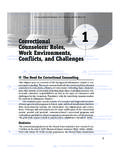Transcription of Educational Trends Shaping School Planning, …
1 EEdduuccaattiioonnaall TTrreennddss SShhaappiinngg SScchhooooll PPllaannnniinngg,, DDeessiiggnn,, CCoonnssttrruuccttiioonn,, FFuunnddiinngg aanndd OOppeerraattiioonn National Clearinghouse for Educational facilities National Clearinghouse for Educational facilities at the National Institute of Building Sciences 1090 Vermont Avenue, NW, Suite 700, Washington, DC 20005-4950 888-552-0624 Prepared under a grant from the Department of Education, Office of Safe and Drug-Free Schools 2010, National Institute of Building Sciences Kenneth R. Stevenson September 2010 What does the future hold for educators and facilities professionals when it comes to planning , building, funding, and operating School facilities ? No one can absolutely know beforehand. However, there are many, many indicators of where public education in the United States may well be destined. These indicators take the form of already occurring Trends that will change education dramatically in the next forty years.
2 While that seems like a long way off, School facilities built today will likely still be in existence in 2050. This raises a critical question. What are the emerging major Trends educators and facilities specialists need to be aware of to better insure that future School structures complement the coming evolution, and possibly revolution, in public education? This question serves as the framework for what is presented in the following pages. First, though, why is it important to be aware of Trends ? As futurist Gary Marx (2006) points out, Identifying, monitoring, and considering the implications of Trends is one of the most basic processes for creating the future (p. 326). Aldridge and Goldman (2007), authors of a book on issues and Trends in education, reinforce the need to carefully study Trends when they point out that, People living in the 21st century will experience more rapid changes than in any other period of human history (p.)
3 94). And, Gene Glass (2008), writing on the possible fate of public education in America, reminds us that the events of today often reshape the future in dramatic ways not now imagined. He states, for example, The invention of technologies shapes culture in ways that are often unpredictable at the birth of the invention. Television killed dance bands; the Internet is killing book stores (p. 11). Will technology, or a yet to be identified phenomenon, kill public education as it now exists? If so, what may take its place? If not, what adjustments will be needed to insure that the public education system has a vital and vibrant future? And, what does all of this mean to educators and facilities professionals who are responsible for planning , design, construction, funding, and operation of schools? Not all of these questions can or will be answered here. However, the intent is to provide sufficient information about Trends in America to assist educators and facilities professionals to be prepared for an increasingly diverse, conflicted, and constantly evolving world of education.
4 Presented are fifteen Trends that are redefining education in the United States -- and how each relates to the field of School facilities . Some Trends are broader, such as those dealing with general population changes impacting on education. Others are specific to education, including trend information on changes in the teaching corps, School size, and organizational structure of schools. In the concluding section, the cumulative effects of the Trends on the brick and mortar place called School are discussed, as well as ways educators and facilities professionals can work in concert to prepare for and to address the Trends as they emerge and become full-blown. Before presenting the updated Trends , a note of forewarning is extended to the reader. The first two editions of this NCEF Trends work (2002 and 2007) tended to envision a relatively rosy, almost idealistic future for public education. The new version does not.
5 A continuing recession, escalating political polarization, risiing racial/ethnic tensions, a growing national debt, and a widening divide between the haves and the have nots portend a future fraught with unprecedented challenges to and clashes over the form and substance of public education in America. However, while the likely picture that the new Trends paints is relatively bleak, the future is not pre-determined. The intent is that this edition serve first and foremost as a vehicle for careful study, reflection, discussion, and thoughtful action by those who will affect and be affected by changing Educational conditions and circumstances. As a result, the hope is that the fate of public education may be more positive than Trends , if left unattended, appear to indicate. In essence, this work reflects the belief that, as an old adage suggests: We can t control the future, but we can help shape it. 2 Education Trends Shaping School planning National Clearinghouse for Educational facilities at the National Institute of Building Sciences 1090 Vermont Avenue, NW, Suite 700, Washington, DC 20005-4950 888-552-0624 Prepared under a grant from the Department of Education, Office of Safe and Drug-Free Schools 2010, National Institute of Building Sciences The School -age population in the United States will grow from less than 60 million in 2010 to nearly 80 million in 2050.
6 ( Census Bureau, 2008a) Trend 1: The Numbers of Youth Increase Dramatically Synopsis The number of School -age children in the United States will increase by about 20 million, or nearly 35%, in the next forty years ( Census Bureau, 2008a). On average approximately ninety percent of America s children historically have attended public schools (National Center for Education Statistics, 2009j). Therefore, public education could need space for about 18,000,000 more students than in 2010. Using 600 as the average size for a School , this increase equates to about 30,000 new School facilities between 2010 and 2050. On average, over 750 new public schools per year could be needed over the next four decades just to address the population growth. That number does not include construction required to replace or modernize currently existing schools as they age and deteriorate over this time period. Assuming that education as we know it continues to exist over the coming decades, the need for new schools will be significant.
7 Consequences On the surface it appears that educators and facilities professionals can expect a significant amount of work in the area of School construction in the coming decades. However, many confounding variables need to be considered in looking to the future of School facilities construction. First, current depressed economic conditions are not expected to improve for some time (Kennedy, 2010). Even when they do, psychological scars of high unemployment and lost homes will remain for many years afterward. While student enrollments will undoubtedly increase, it is less clear that capital funding will be readily available to meet the certain growth. Overcrowding and continued use of School buildings beyond their useful life may well occur. Significant efforts will be needed to convince taxpayers and politicians to adequately fund School construction over the next forty years. Second, no one is sure what the ultimate impact of the virtual School movement will be on the need for a physical place called School .
8 What is known is that more and more students are opting to take web-based courses (and, in some cases, full degrees) in their homes (Gray & Lewis, 2009). And, many states are beginning to set up and administer their own publicly financed virtual schools as an alternative for requiring students to attend a brick and mortar facility. It is not unrealistic to think that many states will look more and more to technology and virtual schooling in hopes of reducing the tax burden for School construction. Educators and facilities professionals will need to work together to monitor technological and funding Trends and be prepared to incorporate their effects into School facilities planning , design, construction, funding, and operation. Trend 2: The Student Population Becomes More and More Diverse Synopsis Forty years ago a vast majority of children (4 out of every 5) in America s public schools were white, non-Hispanic.
9 That percentage has dropped precipitously, with slightly over half of the students in schools today falling into that category. And, projections indicate that within the next forty years white, non-Hispanic children will comprise slightly over one-third of the School -age population. In effect, over the next several decades, America s public schools will become institutions serving multiple minorities, with no single racial/ethnic group being a majority ( Census Bureau, 2008b). The Hispanic School -age population (all races) will grow significantly during the foreseeable future. By 2050 the number of School -age Hispanic children will increase 120% over 2010 numbers. At the same time, as birth rates continue to decline among the white, non-Hispanic population, the actual number of School -age white children in 2050 will be about three million fewer than that of 2010. The black School -age population (non-Hispanic) will show some increase over the coming decades, growing about 15 percent in number, but becoming a smaller percent of the total.
10 Other racial/ethnic School -age populations ( Asian, American Indian), though relatively small individually in terms of total student enrollments, will increase as well, growing from 13% of the whole today to 18% in 2050. The percentage of non-Hispanic white students in schools will decline from 52% in 2010 to 35% in 2050. ( Census Bureau, 2008b) Education Trends Shaping School planning 3 National Clearinghouse for Educational facilities at the National Institute of Building Sciences 1090 Vermont Avenue, NW, Suite 700, Washington, DC 20005-4950 888-552-0624 Prepared under a grant from the Department of Education, Office of Safe and Drug-Free Schools 2010, National Institute of Building Sciences Consequences Diversity itself will not be the issue that confronts educators and School facilities professionals. Instead, the real challenge will come from what that diversity represents in this country.
